Cheshire wants to share his passion of Commander with you, so to do that he is writing a series of articles based on different considerations such as new player guide, guide to deck building and behaviour guidelines that you can use to make you a better member of the community, and a better player. These are THE COMMANDER FILES.
WHAT IS EDH/ELDER DRAGON HIGHLANDER/COMMANDER/SINGLETON 100/100 CARD HIGHLANDER?
EDH/Commander is a constructed format that follows some very simple main rules:
- You must have a legendary creature as your commander, you commander must reflect the colour identity of cards in your deck
- A card’s colour identity is its colour plus the colour of any mana symbols in the card’s rules text. A card’s colour identity is established before the game begins, and cannot be changed by game effects. Cards in a deck may not have any colours in their color identity which are not shared with the commander of the deck
- A deck can contain no more than 100 cards including your legendary commander
- You may only play ONE copy of a card other than basic land unless the rules text advises otherwise (such as Relentless Rats)
- Players start the game with 40 life each. If a player has been dealt 21 points of combat damage by a particular Commander during the game, that player loses the game.
- Commanders begin the game in the Command Zone. While a Commander is in the command zone, it may be cast, subject to the normal timing restrictions for casting creatures. Its owner must pay {2} for each time it was previously cast from the command zone; this is an additional cost.
If a Commander would be put into a library, hand, graveyard or exile from anywhere, its owner may choose to move it to the command zone instead - Commander can be played with as few as two players and as many additional players as you feel you wish to play with, though the optimal number is pods of four. Or you could be crazy and do 100 players, though I would stress to look in to how to play with a large group, as there are special ways to play that sort of large game… Or you know, just don’t
- The Commander Community banned list is HERE and the WOTC ban list is HERE
- Some play groups have “house rules”, you may want to talk to your FLGS or local Commander/EDH playgroup to see what rules they use
- Commander is a CASUAL format, that aims to create games that everyone will love to remember, not the ones you’d like to forget
THE HISTORY BEHIND EDH/COMMANDER

Phew, that’s a lot of names and every play group seems to have its very own name for one of the best casual formats in Magic: the Gathering. But what is the history behind EDH/Commander and where did this hyper unusual highlander format come from? It is widely documented that the first incarnation of Elder Dragon Highlander was created by a small group of judges (three apparently) as a way to wind down after large events.
Sheldon “the Godfather of EDH” Menery, was responsible for bringing the format into the public eye and soon it became a fixture on the Pro Tour judge circuit being played after long event days as a way to wind down, eventually an article on it was published on StarCityGames. In 2005, the format began to take hold and the Rules Committee was formed to manage the format, starting out as a small group of judges and eventually inviting some online community members and other Magic professionals.
Eventually, Wizards of the Coast realised how massive casual kitchen table Magic was and how astonishingly large the Commander player base was and re-titled this casual format to Commander. Wizards then started producing supplemental decks for it and designing specific cards for commander players in black boardered sets, most players cheered at this prospect.
WHATS THE FASTEST WAY TO BUY IN

2017 Commander has just been and gone and there is usually four or so decks released per year. My suggestion would be to look for the most recent 2017 pre-constructed decks, and start from there. They are a quick and easy way to get a playable deck and some staples that you can slowly upgrade at minimal cost. Heads up though, the mana base of the 2017 decks are fine, but you may want to concentrate on lands first.
BASICS OF BUILDING YOUR FIRST COMMANDER/EDH DECK
Getting in to Commander can be one of the most DAUNTING prospects. We are almost at TWENTY FIVE years of Magic: the Gathering, and there is no shame in starting now or having sold off your collection years ago, only to realise just how badly you want to play and get back in. So, let’s all learn together and talk about some of the basic concepts of the “99”.
YOU DON’T NEED TO BUILD THE 99 SOLELY AROUND YOUR COMMANDER
This is the first and perhaps most important lesson you could ever learn about commander. I know you love your Locust God, you can’t base your entire deck on just your commander. You will likely need other creatures, spells and artifacts to help you win the game. Now, this doesn’t mean that you can’t play cards that will help you get to some combo that unleashes 300 Haste Flying Insect tokens on your poor, unsuspecting opponents, not at all.
Look to enhance your deck with synergies like Talrand, Sky Summoner and Young Pyromancer if you’re playing Izzet and a heap of sorceries and instants. Flooding the board with tokens can be very fun and rewarding. Perhaps include some “tribal” cards that also punish your opponents based on having x of some creature type. The options are near ENDLESS!
Be mindful that most spells, artifacts and creatures should serve more than one purpose if possible, you’re effectively trying to wring out as much synergy and value as you can from every play you make. A creature that comes into play and draws you two cards is far better than a creature that comes into play and does nothing. Also, don’t get trapped in a “LIFE GAIN IS GOOD” mindset. Life gain CAN keep you alive, but commander damage cares NOT for your foolish life total.
THE CORRECT RATIOS ARE NOT ALWAYS CORRECT, BUT HERE’S A GUIDE

LANDS LOTS OF LANDS
Firstly, just like any other format, your curve will matter. You do get some leeway with the curve as commander is typically a little slower than a lot of other formats, but you don’t want to be stuck with a hand of annoying eight drops and be left vulnerable to faster decks.
Secondly, mana fixing (being able to “tutor” for lands or create mana of colours you need) is fairly easy in commander due to the wide variety of of lands, mana producing artifacts, spells and ramp creatures in the available pool of cards that are legal. Most decks run 36 to 40 lands and a few artifact mana sources/ramp spells
So let’s go a two colour deck with 36 lands and make sure that four are cycling lands, cycling lands are great because though they usually come in to play tapped, late game you can cycle them just to draw a card.
FLY MY WINGED MONKEYS!
Creatures matter in most decks, but not all. When you’re first starting out, I would suggest that you look to play more on the heavy creature side. There is a few reasons for this, the first allows you to maintain a position on the board so that you’re not left defenseless. The second is you want to show your might, but not commit to the board in such a way that you become a powerful target that other players NEED to take out. Remembering that, not unlike other formats, the curve MATTERS. 30 creatures should be enough of a ratio that we have them to play when we need them.
ARTIFACTS MATTER, BUT USUALLY NOT A GREAT DEAL
Okay, for the sake of this guide I’m not going to go though heavily advanced mechanics of some of the most broken and abusive artifacts here. Instead I’m going to tell you that depending on the deck you make, you will want to consider around FOUR artifacts. Sol Ring (provides 2c for tap), Commander Sphere (provides one mana based on commander’s colour identity), Eldrazi Monument (anthem effect plus flying, plus +1+1 to your creatures and they gain indestructible) and Vedalkin Orrery (way underplayed, makes all your spells instants).
SPELLS ARE FUN, SOOOO FUN!
We now have 29 spaces left for card draw, removal and other effects. You will want to include a number of mass board wipes (Wrath of God type effects of cards that bounce all opponent’s creatures back to their hands) as well as some single or multi target removal. We also want some card draw spells and anything that will help us win, but this is all dependent on the deck you wish to run.
Personally I try to only run 2 mass removal sweepers and then around 4-6 targeted removal spells, not including any creatures that may be able to also deal with targets and remove threats. Depending on the colours you play, you may need to tailor this to your play style and local meta-game.
Phew, we made it to the end! I think we can leave it there for now, so keep an eye out for more of these. And as per usual, PLEASE post below with any suggestions




